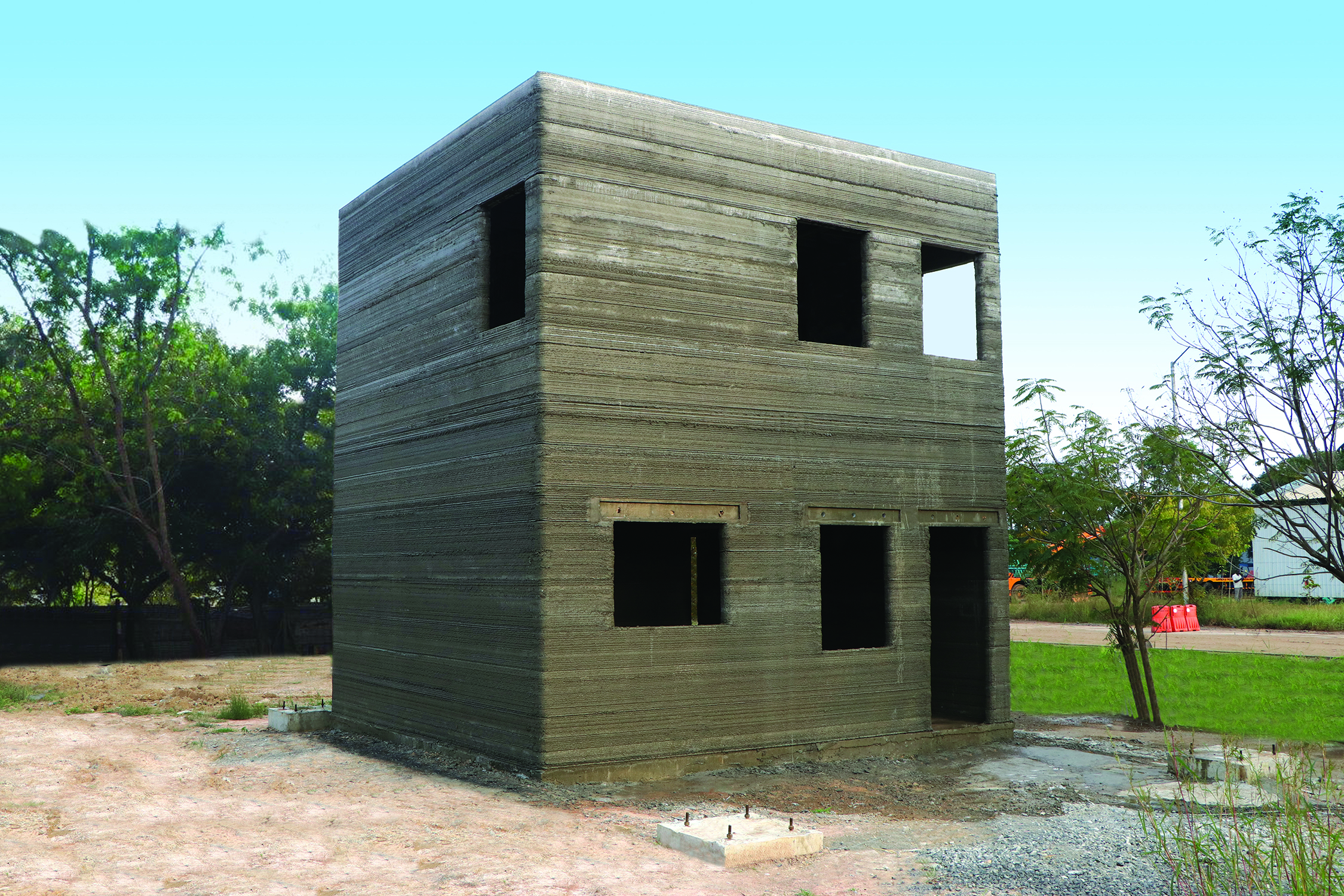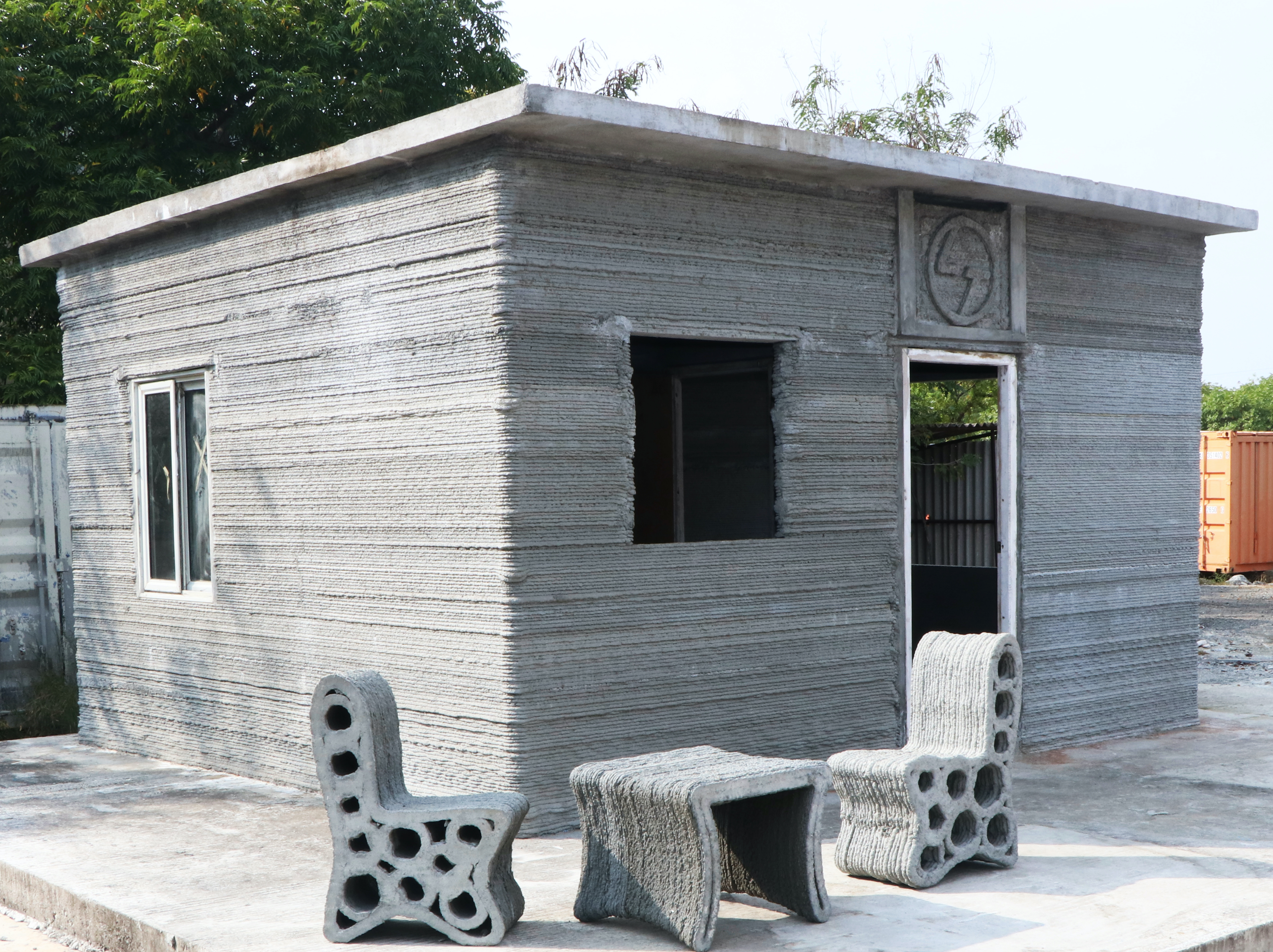Following the 3D printing of a one-storey house back in November of 2019, India’s largest construction company, Larsen & Toubro Construction (L&T), has now completed the country’s first 3D printed two-storey building.
With a modest floor space of 65m², the building was fabricated using a large-format concrete 3D printer supplied by OEM COBOD, and is made up of a locally sourced 3D printable concrete mix developed by L&T’s own in-house team. Located at the company’s Kanchipuram facility near the city of Chennai, the building even has integrated reinforcement bars, and is fully compliant with all of India’s building codes.
M. V. Satish, Director & Senior Executive Vice President of Buildings at L&T, states, “3D concrete printing is one of the technology disruptors with the potential to radically redefine construction methodologies and I am extremely happy that by demonstrating our growing expertise in 3D printing, we are well positioned to push the boundaries of automated robotic construction.”

Printing with real concrete
The fact that L&T printed the building using its own real concrete mix is a major milestone in and of itself. According to COBOD, the vast majority of 3D printed buildings to date have been constructed using ready mix mortars, which are relatively easy to print with.
Unfortunately, ready mix mortars have a maximum particle size of 4mm, meaning they tend to be weaker than traditional concrete due to a lack of coarse additives, all while being significantly more expensive to produce. Furthermore, mortars generally do not adhere to the building codes of most countries, limiting the material’s scalability.
Impressively, L&T’s building also featured vertical reinforcement bars and horizontal welded mesh distributors, and was printed in a grand total of 106 hours.
Henrik Lund-Nielsen, Founder and General Manager of COBOD, adds, “L&T Construction’s project marks a huge step forward for our industry, on a global scale. Not only is the project showing that more and more conventional construction companies are adapting 3D printing, but the 3D printing of a real concrete made by L&T themselves is significant, as this helps to drive down the cost even further. It is really impressive how L&T developed the 3D printable concrete and applied integral horizontal and vertical reinforcement in the building.”

The push for 60 million houses
The project could not come at a better time, as India is currently striving to build 60 million houses as part of the ‘Housing for All by 2022’ program. L&T has stated that it expects the recent 3D printed building to pave the way for further work, providing real housing for the country’s citizens. The company strongly believes that additive manufacturing will result in higher throughput construction, all while improving the build quality of new residential properties throughout the region.
The benefits of COBOD’s concrete 3D printing technology are not limited to India either, as construction company PERI Group recently announced the commencement of its own project to 3D print a three-floor commercial apartment building on-site in Wallenhausen, Germany. The news came just a few months after the company revealed it was 3D printing the first ‘market ready’ building in Germany, in the town of Beckum.
Elsewhere, in the Flanders region of Belgium, building company Kamp C also 3D printed an entire two-floor, 90m² house using a COBOD system. Beyond just being a one-off test run, the model home is intended to showcase the advantages 3D printing can bring to the construction sector. Through experimentation with the printer, the Kamp C engineers managed to diminish heat loss and significantly reduce condensation.
Subscribe to the 3D Printing Industry newsletter for the latest news in additive manufacturing. You can also stay connected by following us on Twitter and liking us on Facebook.
Looking for a career in additive manufacturing? Visit 3D Printing Jobs for a selection of roles in the industry.
Featured image shows India’s first 3D printed two-storey building. Photo via COBOD.



